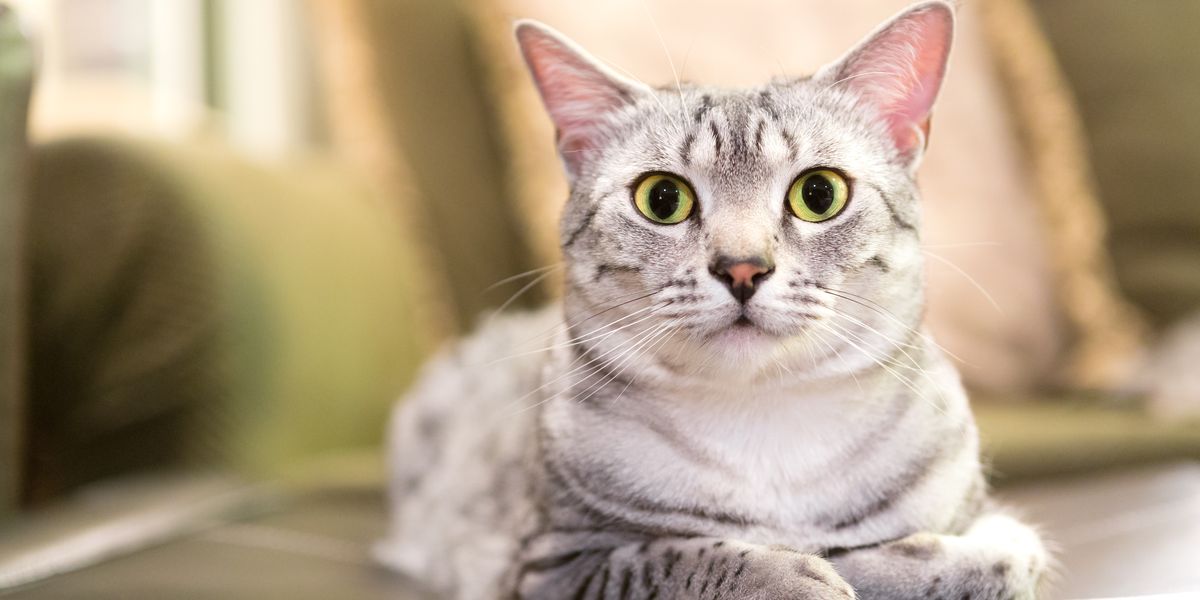
Egypt is home to some interesting and intelligent cats and is considered the birthplace of all domestic breeds. Many of the current Egyptian breeds are difficult to find in North America but you can still thank their ancestors for the cats you own today.
In this article we are going to look at these adorable Egyptian cat breeds as well as their history and characteristics.
#1Egyptian Mau Cat
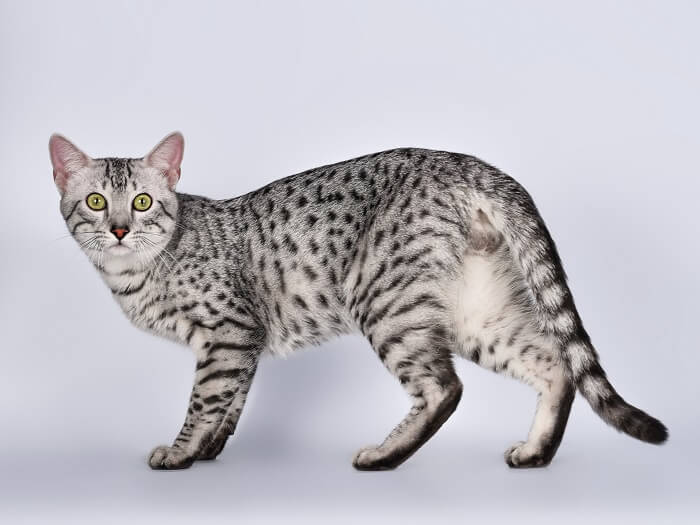
The name ‘Mau’ comes from the Egyptian name for cat, which also sounds like “meow” or the sound a cat makes.
Although this breed’s approximate origins are unknown, ancient Egyptian texts and paintings dating back to 1550 BC depicting spotted cats they worshipped. Although the breed was recorded in Europe prior to World War II, the war nearly wiped out the Egyptian Mau.
The name ‘Mau’ comes from the Egyptian name for cat, which also sounds like “meow” or the sound a cat makes. This breed is also known for a characteristic “M” mark on their head, which is sometimes called the “mark of the scarab”.
The Egyptian Mau is highly devoted to their humans and will voice happiness and affection by meowing. He may slowly swish his tail and make muffins with the front paws. This breed likes to show off their hunting skills by chasing and fetching toys. The Mau is an active breed that you may find on top of a tall cabinet or refrigerator.
#2Abyssinian
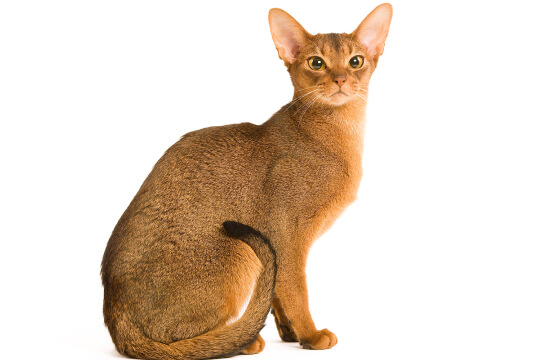
Abyssinians are a highly intelligent breed, very inquisitive and are known for exploring and investigating every corner.
An Abyssinian was first displayed in 1871 at the Crystal Palace cat show. She took third place. There are no records of her origin, but the owner said she had been imported from Abyssinia during the war. Genetic tests have suggested this breed originated from the coastal regions of Southeast Asia and the Indian Ocean, and was brought to Europe by British and Dutch traders, despite its name.
The name Abyssinian comes from the previous name of Ethiopia, Abyssinia. This is where it is believed that the first specimens of the breed were brought to Britain from. The breed was developed to its current standards in the UK.
Abyssinians are a highly intelligent breed and very inquisitive. They are known for exploring and investigating every corner. They are often called “Aby-grabbys” because they like to take items that interest them. The Abyssinian loves to jump and climb as well as play with puzzle toys that challenge his intelligence.
Also Read: The 10 Best Cat Slow Feeders & Puzzle Feeders
#3Chausie
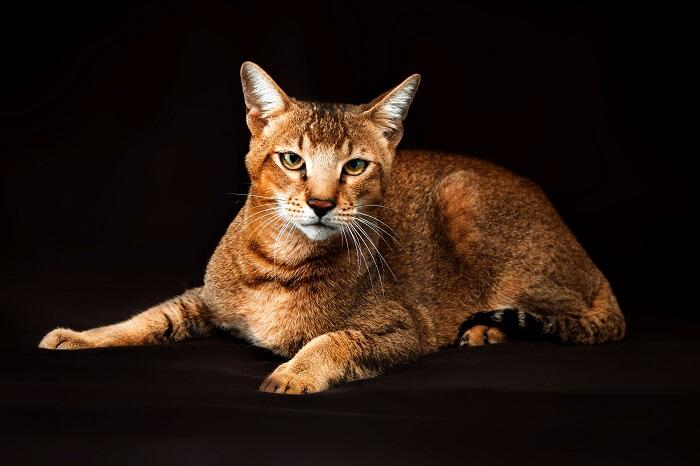
The Chausie cat loves to constantly be in motion and interact with humans and are good-natured, devoted cats that love to play fetch.
The Chausie Cat has an extensive history dating back to the time of the ancient Egyptians. This breed was domesticated by the Egyptians due to their easy-going temperaments and expert hunting skills. These jungle cats were often mummified with their owners in formal funeral proceedings in order to accompany them in the afterlife. Some say the statues of the Goddess Bastet were modeled after the Jungle Cat and the resemblance is certainly seen in her long slender body, graceful appearance, and big ears.
The Chausie cat’s heritage is also responsible for this breed being among the largest cat breeds in the world. They have retained some of the hunting instincts of wild cats, but are able to still build strong bonds with humans.
The Chausie cat loves to constantly be in motion and interact with humans. They are good natured, devoted cats that love to play fetch and have been known to walk on a leash. Chausie cats need stimulation and interaction with humans, and may get bored if left alone for long periods of time.
#4 Shirazi
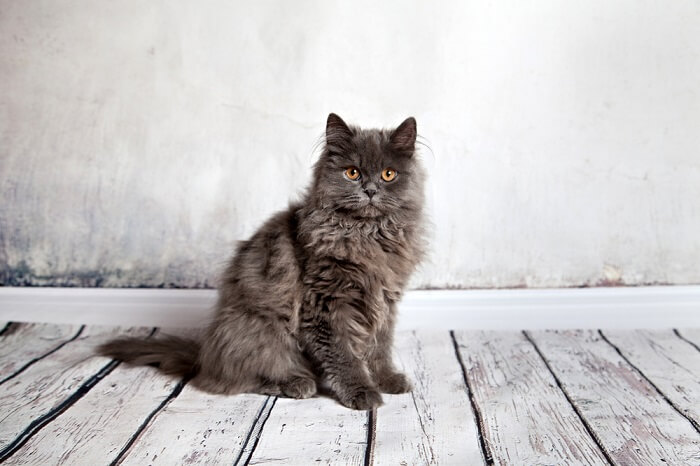
Rumor has it, the Shirazi is the result of breeding the long-haired Persian cat from and the extraordinary and athletic Egyptian Mau.
Breed Overview
- ORIGIN: Iran (Persia)
- ADULT WEIGHT: 7-12 pounds (3.2-5.4 kg)
- GROUP: Longhair
- HEIGHT: 10-15 inches (25-38 cm)
- LIFE SPAN: 12-17 years
- PRICE: $500 – $5,000
The Shirazi are not currently a registered breed but will see plenty of them
roaming the streets of Egypt. According to ancient myth, this breed is
quite old with their origin going back to the Persian reign in Egypt. This is when
Persian cats were introduced into the local Mau population.
Rumor has it, the Shirazi is the result of breeding the long-haired Persian cat from and the extraordinary and athletic Egyptian Mau. The result is a breed that you don’t have to look hard to find the streets of any modern day Egyptian city. Feral and stray communities are constant in urban areas, and this breed is considered a wide spread pest.
The Shirazi cat is one of the friendliest cats but need a lot of attention from their owners. They are also lovable, affectionate, and an easy going breed. Shirazi cats also adapt very quickly to their family, and tend to get attached to one member of the family more than others. They are also . The Shirazi cat is also very playful and very good with children.
#5 Savannah
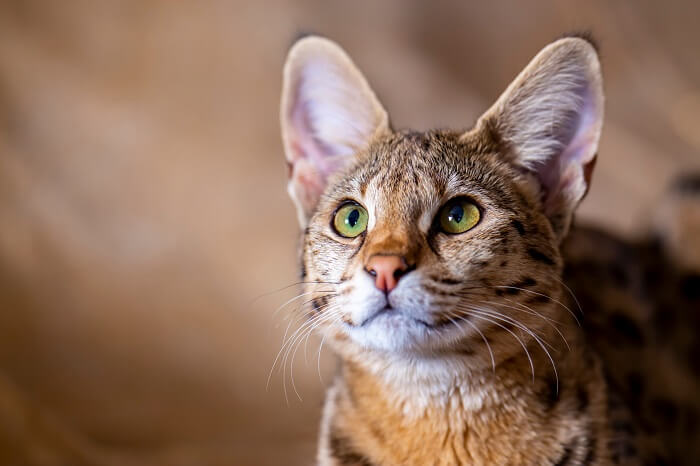
Savannahs are great cats for the right family, but are high-energy and demand a lot of attention.
While the Savannah cat wasn’t actually first bred in Egypt, it has a strong resemblance to some ancient Egyptian cat breeds. Savannahs are actually the result of breeding a Siamese cat with a wild serval. This hybrid breed retains the large perked ears, long legs, and spotted coat of its African cat heritage, yet keeps the friendly demeanor of a domestic cat.
The Savannah cat was first introduced in the late 20th century. First generation hybrids are usually larger than later crosses and have beautiful spotted coats in shades of brown, tan, and black. Later generations are further removed from their wild ancestors, but retain the beautiful fur of earlier generations. Despite being completely wild cats, they were kept as a sign of prestige among the religious and aristocratic elite.
Savannahs are great cats for the right family, but are high-energy and demand a lot of attention. They will not do well in a household where the owners are never home. This breed will bond with any animal they are raised with, and kids and dogs make great companions for this reason. Savannahs are extremely loyal and will follow their favorite humans around the house just for companionship. They also have a reputation for being very talkative and having a variety of distinctive vocalizations.
#6 Nile Valley Egyptian Cat
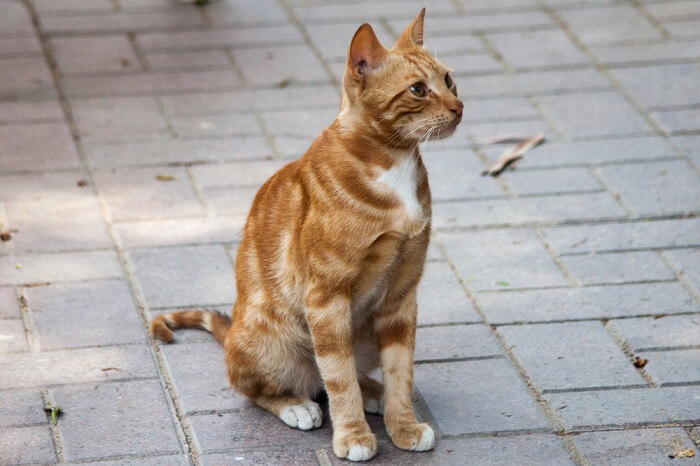
The Nile Valley Egyptian cat has a dog-like personality and will greet owners at the door.
Breed Overview
- ORIGIN: Egypt
- ADULT WEIGHT: 8-15 pounds (3.6-6.8 kg)
- GROUP: Shorthair
- HEIGHT: 9-12 inches (23-30 cm)
- LIFE SPAN: 12-15 years
- PRICE: $500 – $1,500
Based on their art, literature, myths, and religion, the ancient Egyptians had no domesticated cats in Egypt 6,000 years ago. However, 4,000 years ago, domestic cats had found such an important place within the Egyptian culture that they were commonly kept as household pets. The ancient Egyptians loved their cats and considered them members of their family, and in turn desired to keep them after death, through all eternity.
The Nile Valley Egyptian cat is a feral cat breed discovered in Egypt. Some consider them to be Egyptian Maus, though The International Cat Association has recognized them as their own experimental breed. The Egyptian authorities are attempting to eliminate the breed, but ongoing rescue efforts are fighting to prevent this and rehoming these cats in America.
The Nile Valley Egyptian cat has a dog-like personality, and will greet owners at the door. They tend to shadow their humans and constantly aspire to be a people pleaser. Often antisocial with strangers, the breed does do very well with young children and other pets in the home when socialized early. It should be noted that this breed can be very territorial, often starting a fight when another animal enters its territory.
#7 Sphynx
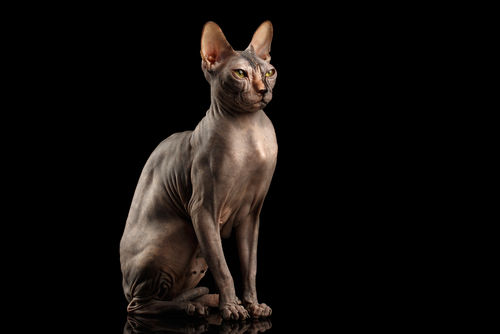
Last but not least we have the Sphynx. When most people think about Egyptian cats, they imagine the Sphynx. Many people don’t know but actually this breed was originally called the Canadian Hairless cat.
It all started in 1960’s Toronto thousands of miles away from Egypt, when a shorthaired cat named Elizabeth gave birth to a kitten with no fur. A limited gene pool and poor understanding of the hairless genes spelled a struggle. Pioneering the breed took years.
The first natural litters of Sphynx kittens were born in Toronto and Minnesota about a decade later. Some cat owners like to think of the Sphynx cat as the king of egyptian hairless cat breeds.
Final Thoughts
Egyptians have always loved cats, regarded them as deities then even mummified them and laid them to rest with their master. Todays domestic cat evolved from Egyptian cats and populations of African wildcats. Therefore, all cat breeds could be considered Egyptian.



